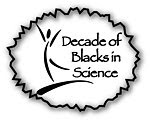Bats are important members of our ecosystem – even in urban and suburban areas. Most mainland U.S . bat species are brown and small in size – like the size of your thumb to the size of your hand. And they are insect eaters. They are pretty abundant, especially if your neighborhood or city has lots of trees, because they live in forest habitats. In urban and suburban areas they live parks and cemeteries – okay, that’s a little Halloween humor; but think about it, cemeteries are just like parks – open green spaces and lots of trees. Bats roost - hang and sleep - up-side-down on trees, on the sides of brick buildings, under the overhang of buildings or even on the ground nestled under the leaf litter. Summer evenings they awake from their sleep and gobble up thousands of mosquitoes, gnats, and other flying insects. They are important urban neighbors.
Right now is a transitional time. Autumn is the breeding season and they hibernate over winter. But…haha, females are NOT pregnant during hibernation. That would just be too energetically costly. No, they mate in the fall and store the sperm over winter. When they wake up some interesting physiology happens, allowing the still active and living sperm to travel and fertilize the female’s eggs in the spring. Amazing! Most bats have one, maybe two babies in the spring.
But you can still create a welcoming habitat for bats. Build a bat house: Info 1, Info 2. That way you might increase your chances of observing these animals and reducing the mosquitoes in your yard.
*****
 My friend and fellow
My friend and fellow  biologist & I were returning to our rooms when we noticed the Dorm RA running around her room fanning at the walls. We looked curiously at her and then I asked, “Got a bird in your room?” She replied, “NO, a bat!” Beth and I looked at each other and asked, “Want us to get it for you?” She looked oddly at us and said, “You’d do that?” Beth and I, smiled at each other and replied, “Yeah, We’re mammalogists. This is nothing.” So we dropped our bags. I grabbed the camera and Beth kicked off her shoes and grabbed a paper towel. After a couple of tries, she nabbed him. The pictures were blurry because the bat was so stressed and moving around. We didn’t have the time to just hold him for a photo shoot, it wouldn’t be proper. The video is dark, too. Can’t see him, but you can hear him. That’s his vocalization used to echolocate insects. And I must say this….Do not attempt this at home. We are professionals and have had our rabies boosters.
biologist & I were returning to our rooms when we noticed the Dorm RA running around her room fanning at the walls. We looked curiously at her and then I asked, “Got a bird in your room?” She replied, “NO, a bat!” Beth and I looked at each other and asked, “Want us to get it for you?” She looked oddly at us and said, “You’d do that?” Beth and I, smiled at each other and replied, “Yeah, We’re mammalogists. This is nothing.” So we dropped our bags. I grabbed the camera and Beth kicked off her shoes and grabbed a paper towel. After a couple of tries, she nabbed him. The pictures were blurry because the bat was so stressed and moving around. We didn’t have the time to just hold him for a photo shoot, it wouldn’t be proper. The video is dark, too. Can’t see him, but you can hear him. That’s his vocalization used to echolocate insects. And I must say this….Do not attempt this at home. We are professionals and have had our rabies boosters. Picture of Me, Beth, and Marcella (she’s the official Bat Biologist in our lab, but wasn’t with us that evening)
Picture of Me, Beth, and Marcella (she’s the official Bat Biologist in our lab, but wasn’t with us that evening)














 This picture gives you an idea of big he is. I know it's gross, but stay with me. Something else I noticed a little way from the possum -
This picture gives you an idea of big he is. I know it's gross, but stay with me. Something else I noticed a little way from the possum -



 I put the carcass in my compost bin.
I put the carcass in my compost bin.

















 I
I 
 This lady beetle hitched a ride on my car from Racine, Wisconsin. As I was loading up and saying goodbye to my parents, I noticed this lady bug on the back door of my car. When I got out of the car in Milwaukee (north of Racine) to visit more family, I notice this little guy (or gal) was still hanging on. I had no idea these beetles were so tenacious. I’m not sure if it departed in Milwaukee or somewhere else along my route. But it sure is a fine example of how
This lady beetle hitched a ride on my car from Racine, Wisconsin. As I was loading up and saying goodbye to my parents, I noticed this lady bug on the back door of my car. When I got out of the car in Milwaukee (north of Racine) to visit more family, I notice this little guy (or gal) was still hanging on. I had no idea these beetles were so tenacious. I’m not sure if it departed in Milwaukee or somewhere else along my route. But it sure is a fine example of how 





























